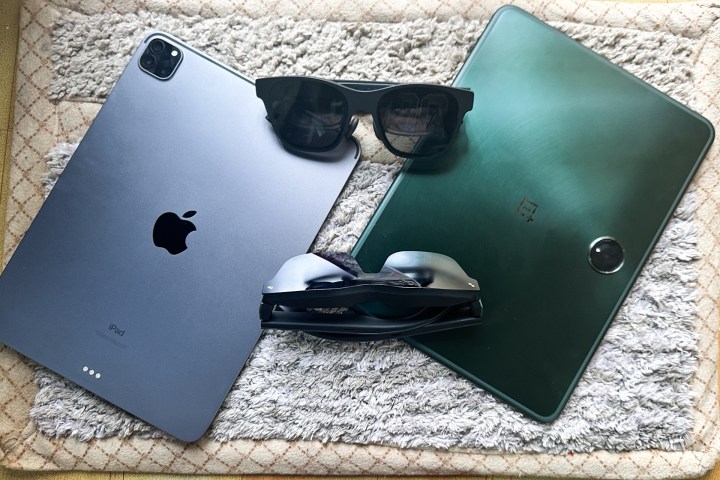
When Apple announced its overtly expensive Vision Pro AR headset, arguably its biggest promise had little to do with hardware. The company says “hundreds and thousands of iPhone and iPad apps” run well on Vision OS, and they will be ready to boot on the Vision Pro on launch day.
Apple made an ever bigger promise to developers. “By default, your iPad and/or iPhone apps will be published automatically on the App Store on Apple Vision Pro,” the company said. That’s akin to solving the biggest problem for an experimental class of hardware.
Apple won’t be the first to attempt AR/VR hardware. Far from it, actually. The likes of Google have failed, while Meta still persists with its Quest range. Then we have XR glasses from the likes of Xreal and TCL. I recently tested the Xreal Air 2 with my iPad Pro and came out impressed.
Unfortunately, the experience of using AR glasses on tablets is not uniform across the Apple and Android ecosystems. The gulf is a little too wide in some scenarios.
An endgame right at the doorstep
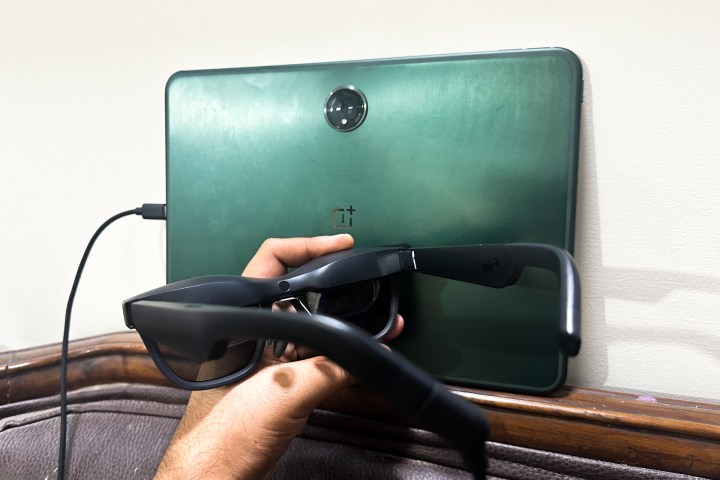
I’ll start with compatibility and ease of access. I tested the Xreal Air 2 and the RayNeo Air 2, pairing them with the iPad Pro and the OnePlus Pad. To clarify. AR glasses are essentially glorified secondary screens that sit on your nose.
The key to getting AR glasses to work with a tablet is a USB-C port that supports DisplayPort output. All iPads with a USB-C port support DisplayPort. Some even throw in Thunderbolt support, which allows the tablet to drive high-resolution monitors.
But as far as AR glasses are concerned, most of which limit themselves to the Full HD per eye resolution, the standard DisplayPort Alt Mode function is enough. But the situation is a tad complex. Only a handful of Android tablets, such as the recent additions to the high-end Samsung Galaxy Tab S series, support DisplayPort output.
When I plugged the Xreal Air 2 into the OnePlus Pad’s USB-C port, I ran into an incompatible hardware error. A quick look at the Xreal website shows not a single tablet in the list of compatible hardware. Using an adapter didn’t offer any help.

In the case of the RayNeo Air 2 glasses, the OnePlus Pad simply didn’t read them. As I mentioned above, only high-end Samsung tablets support DisplayPort over USB-C output. A few other brands make flagship Android tablets, but none of them are available in the U.S.
On the iPad Pro, as soon as I plugged in the Xreal and RayNeo AR glasses, the display unit automatically went into extended screen mode with Stage Manager enabled. With the tap of a button, you can switch to screen-mirroring format. But if you’re holding the iPad in a vertical orientation, it automatically signals the AR glasses to trigger screen-mirroring mode. These neat little conveniences actually matter and encourage you to dive into new experiences.
On one hand, you have the Apple tablets — across the mainline, Air, and Pro range — ready for AR glasses and starting at $449. If you can find refurbished units, that’s even better. On the other hand, Android tablets are limited in availability, offering extremely limited compatibility and a smaller life span in terms of software update support.
The fundamental firepower question

Before I get into the details of AR experiences, let’s address the hardware situation first. The likes of the RayNeo Air 2 or Xreal Air 2 don’t come with their own computing or graphics processing kit; your phone or tablet provides all the juice.
As far as basic tasks like web browsing and streaming, any tablet out there, iPad or Android, is up for the job. But the moment you get into games, you start seeing a difference. And if you’re using a compatibility hack, that experience is even more apparent.
Let’s start with the hack, which is essentially a remote screen-mirroring hub. For the Xreal Air 2, you get the Beam. With the RayNeo Air 2, the company sells you a MiraScreen pocket device. Both are standalone purchases and cost over $100 each.
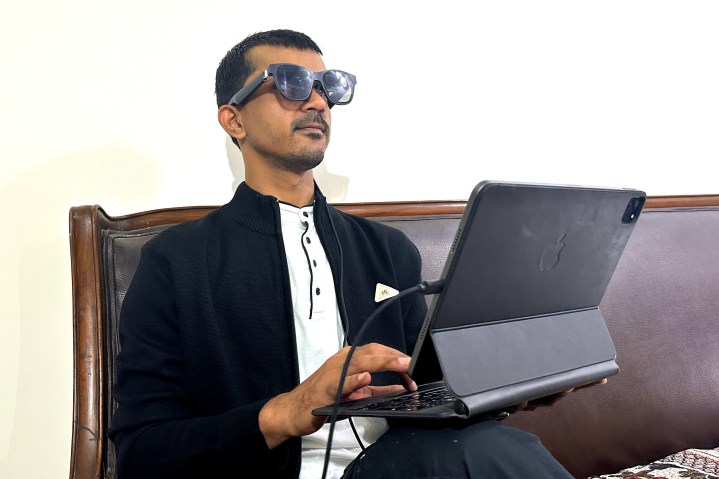
If your incompatible tablet doesn’t support direct screen casting via a USB-C port, which is most likely the case for an Android slate, you need to plug the glasses into this hub. Next, using Bluetooth/Wi-Fi, you need to connect this hub wirelessly to the Android tablet in your hand.
Once the pairing is done, you’re good to go. Your Android phone’s UI will now mirror on the AR glasses’ display unit. It’s an expensive hassle, but the only road ahead. If you’re into playing games, you run into another problem.
That problem is processor firepower. The OnePlus Pad features the MediaTek Dimensity 9000 chip. It can’t quite compete with the entry-level iPad (and its A13 chip) for a couple of reasons when it comes to gaming — and certainly not with any M-series processor inside the iPad Air or Pro.
First, the Dimensity 9000, despite its top-tier credentials, can’t quite hold its own against Apple’s A14 — both in real-life gaming or synthetic benchmarks. It won’t be a limiting factor in casual games, but the moment you jump into something like Genshin Impact, you will see it stuttering and downgrading the experience to lower graphics settings.
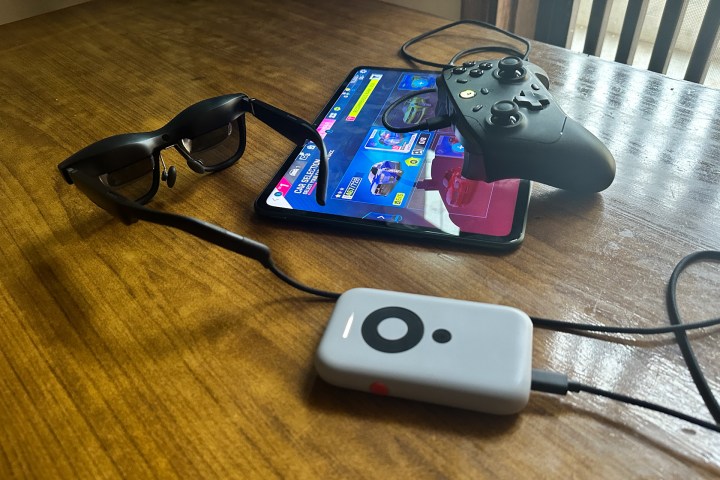
Next, when you’ve paired the AR glasses to an incompatible Android tablet via a mirroring hub, keep in mind that it’s a wireless lane. Random glitches and lags are apparent. And if you’re someone who likes to spend time with friends in high-stakes competitive shooter games, this solution is not for you.
For my gaming comparison, I picked up the best controller I could find to be on the safe side. I paired my tablets with the GameSir Cyclone T4 Pro. This one offers Hall Effect sticks and triggers with extremely high accuracy alongside tactile buttons.
Before you immerse yourself in gaming on AR glasses, you also need to consider that, aside from the wireless mirroring of a demanding game’s UI on an external screen, there is the problem of input when paired with a Bluetooth controller.
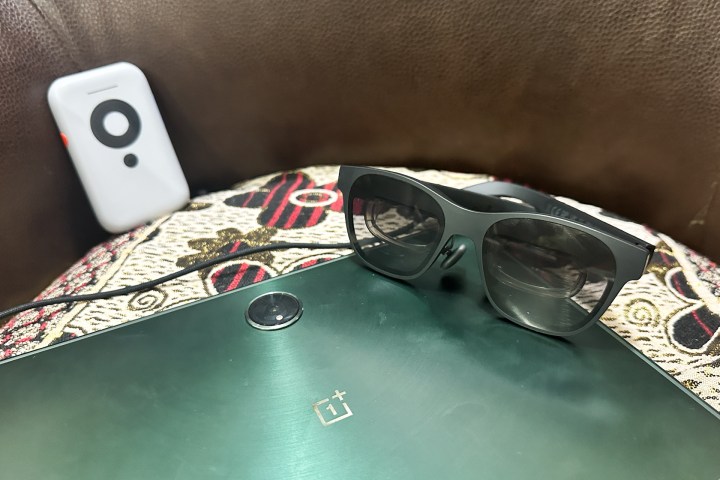
On the iPad, the AR glasses rely on a direct wired connection. That means there are little to no visual hiccups or stutters. The Apple silicon shows its true colors and easily handles graphics-intensive games — especially those in the Apple Arcade library.
It’s also worth noting that in wired connection mode with the iPad, the Bluetooth lane is free. That means you can simultaneously connect a wireless earbud and a gaming controller.
The computing divide
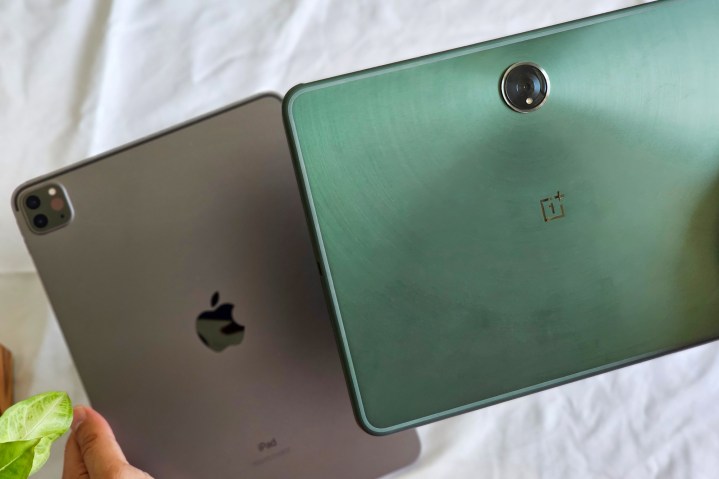
One of the biggest promises that every XR brand sells is the idea of more immersive computing. Imagine seeing floating desktops around your head, somewhat like in a sci-fi flick. Xreal offers Nebula, a software that surrounds you with three floating desktops. RayNeo also offers the facility, but lets you run up to six virtual windows.
On the mobile side, you get no such pizzazz. An argument can be made that tablets are not real computers, so they don’t need such demanding tools. But that’s true to only a certain extent. If you ask me, I’d say “hard disagree.”
For the past two years, the iPad Pro and Samsung Galaxy Tab S devices have served as my primary computing workhorse. Yes, there are limitations, but it never hurts having a hidden PC-look-alike system on a slate.

Apple offers just that with Stage Manager. Samsung serves you DeX. I’ve used both extensively. In fact, DeX on the Galaxy Z Fold 5 powered a whole 144Hz monitor for two weeks of full-fledged work.
But DeX is more tightly baked into the mobile experience, while Stage Manager on iPad feels more mature and a lot closer to macOS than DeX is to Windows. Then there’s the question of ecosystem benefits, where Apple is ahead of the Samsung-Windows bonding.
Apart from Samsung tablets, you don’t get a DeX-like computing perk on any Android tablet out there. And the situation is not going to change anytime soon for multiple reasons. Can a midrange Qualcomm or MediaTek processor handle something like Stage Manager, but built atop Android foundations?
Likely not. Just look at Apple. The company limited Stage Manager to iPads with desktop-class M processors inside, not those with mobile-tier Bionic A-series processors. As far as the software goes, Apple continues to make slow, but steady progress with iPadOS toward a more computing-friendly future by bringing pro-grade apps to the iPads.
The good, bad, and ugly of AR and ecosystems
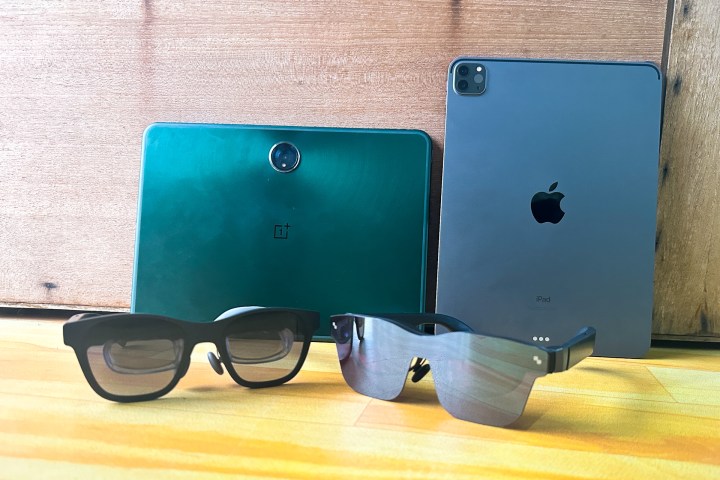
You might think that AR Glasses are not merely here to mirror the screen of your phone or tablet close to your eyes — and I absolutely agree with the argument. In fact, the lack of direct support for iPadOS seriously puts Apple on the back foot when it comes to AR hardware. But even with full-fledged compatibility in tow, Android doesn’t fare much better.
On the RayNeo Air 2, the AR experiences are mostly limited to prerecorded surround videos, immersive versions of famous paintings, 3D art pieces, and about a dozen extremely basic games that are totally hit-or-miss. The situation on the Xreal Air 2 is worse.
There just aren’t many mobile-focused apps out there that can provide a standout augmented reality experience on the mobile ecosystem, be it Android or iOS/iPadOS. That leaves these glasses as nothing more than wearable secondary monitors.
But come 2024, with the arrival of Vision Pro, developers will pour tons of apps into the Apple ecosystem. And with the kind of integrations that Apple has already started building the foundations for, it won’t be surprising to see more AR apps coming to the App Store.
Overall, purely from a tablet perspective, Apple is in a much better position than Android to handle AR glasses. Moreover, with a highly anticipated entry into the world of AR and VR planned for 2024, the industry is only going to shift more in the direction of Apple hardware.



